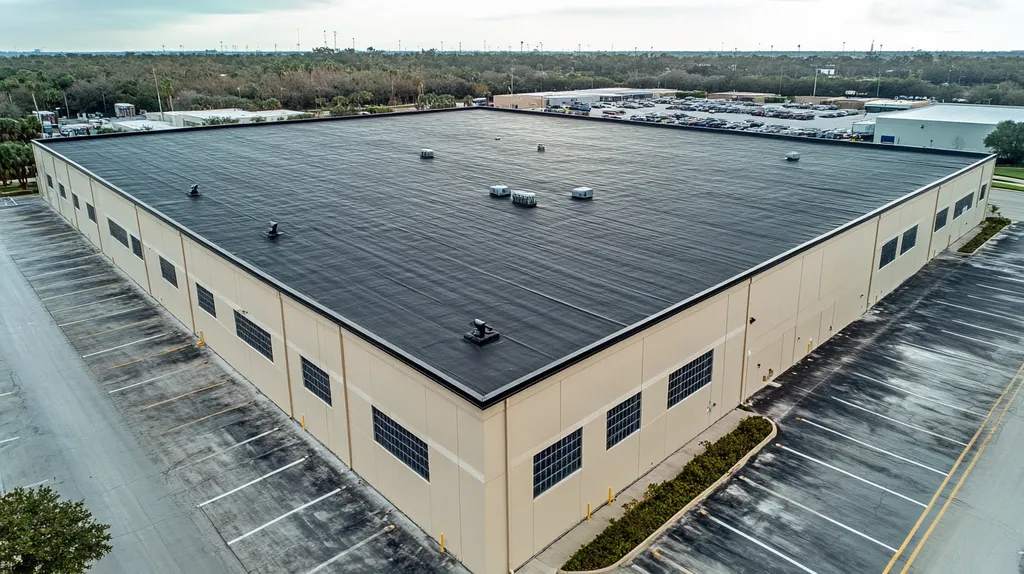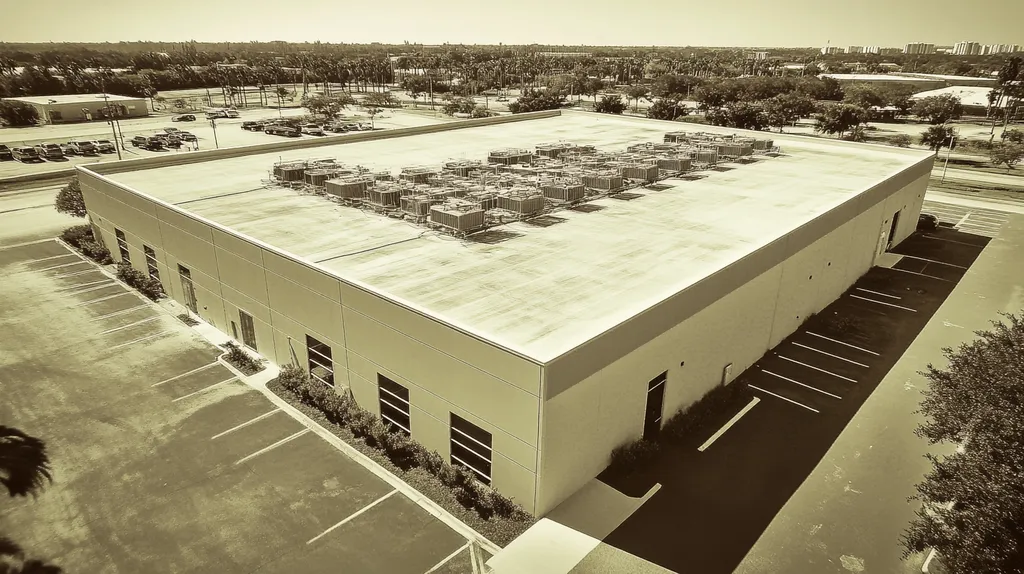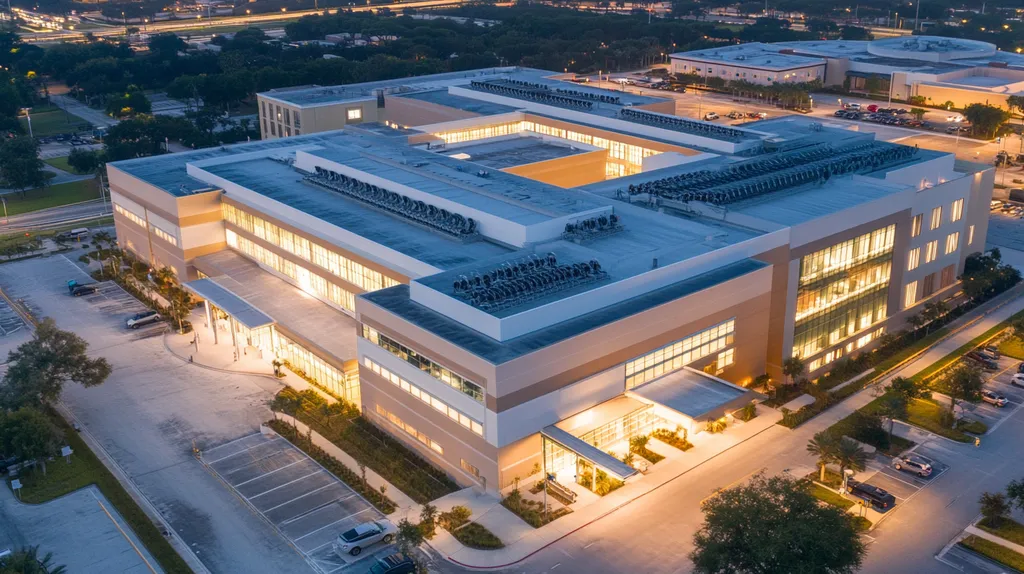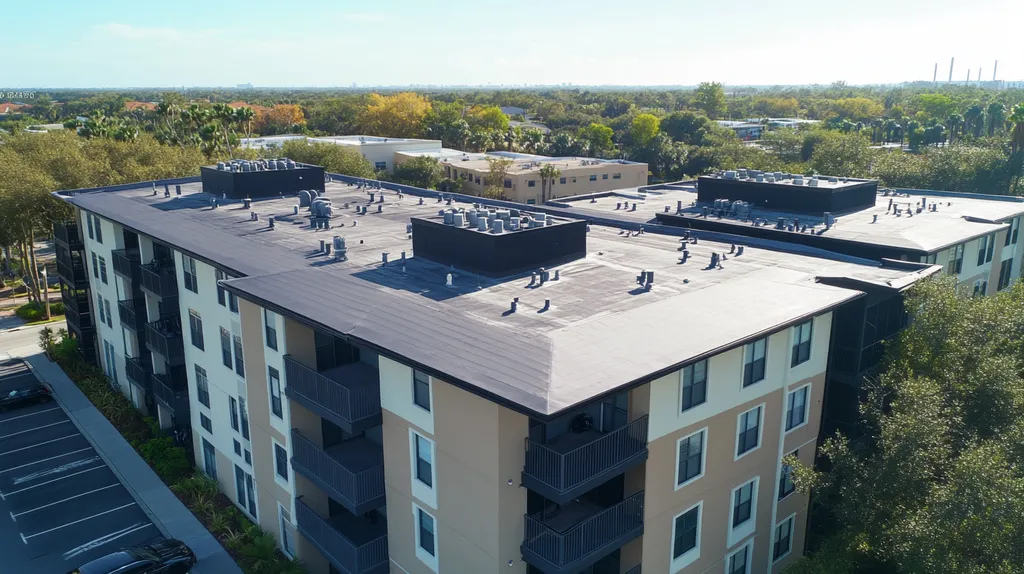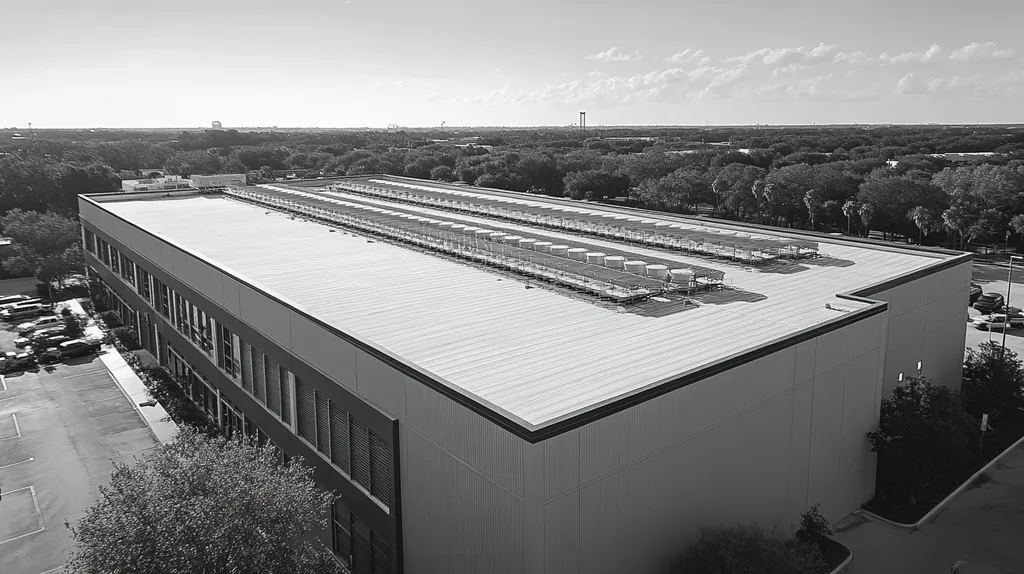Welcome to today’s Battle Royale featuring two roofing heavyweights: “Silicone Coatings” in the east corner versus “Polyurethane Coatings” in the west!
Tonight’s showdown pits these contenders against each other across six punishing rounds designed to test every aspect of their performance for Commercial Roof Type and Climate applications.
At stake? Millions in potential costs, decades of building protection, and the critical performance demands of modern commercial and industrial facilities.
Our professional judging panel will evaluate each round on technical merit, real-world performance, and value delivery. After all six rounds, we’ll declare our ultimate champion.
Ladies and gentlemen, facility managers and building owners… it’s time to rumble!
ROUND 1: INITIAL COSTS & INSTALLATION
When protecting commercial buildings worth millions of dollars, choosing the right roof coating system can mean the difference between long-term protection and premature failure. Initial costs and installation considerations directly impact both immediate budgets and long-term performance. Property owners must carefully weigh the tradeoffs between material costs, application complexity, and project timelines to make informed decisions.
Material Expenses
Material costs represent a significant portion of any commercial roofing project’s budget. Silicone coatings typically cost $1.50-$3.00 per square foot for materials, making them an attractive initial investment for many property owners.
Polyurethane coatings command a premium price point of $2.00-$4.00 per square foot. This higher cost reflects their multi-layer application process and advanced chemical properties.
While the price difference may seem substantial across large roof areas, it’s essential to consider the total lifecycle cost. Silicone’s lower upfront cost and proven performance make it particularly cost-effective for most applications.
Given the clear price advantage and reliable performance, silicone coatings earn an ADVANTAGE in material expenses.
Installation Complexity
Silicone coatings stand out for their straightforward application process and ability to withstand ponding water, making them increasingly popular in commercial applications. Their single-coat application reduces labor time and complexity compared to alternative systems.
These coatings provide excellent ultraviolet protection and resist oxidation while maintaining direct adhesion to existing surfaces. However, they do require careful application techniques to ensure proper performance. (source: FacilitiesNet)
Polyurethane systems demand more precise surface preparation and environmental conditions during application. Their multi-layer requirement increases both complexity and the potential for application errors.
While both systems require skilled installers, silicone’s simpler application process earns it an ADVANTAGE in installation complexity.
Project Timeline
Project duration directly impacts facility operations and overall costs. Silicone coatings typically require minimal cure time between coats, allowing for faster project completion.
Weather conditions affect both systems, but silicone coatings show greater tolerance for varying conditions. This flexibility helps maintain project schedules even when conditions aren’t ideal.
Polyurethane systems demand longer cure times between multiple coats. Their strict environmental requirements often extend project timelines and can lead to delays during unpredictable weather.
With faster completion times and greater application flexibility, silicone coatings gain another ADVANTAGE in project timeline considerations.
ROUND 1 WINNER: SILICONE COATINGS
ROUND 2: DURABILITY & LIFESPAN
When protecting commercial buildings worth millions of dollars, durability and lifespan of roofing systems become critical factors. A premature coating failure can lead to extensive water damage, equipment losses, and business interruptions costing hundreds of thousands in repairs. Understanding how different coating systems perform under real-world conditions is essential for making informed decisions that protect both assets and operations.
Weather Resistance
Commercial roofs face constant exposure to harsh weather conditions that can quickly degrade protective coatings. UV radiation, temperature fluctuations, and moisture create a punishing environment that tests coating durability daily.
Silicone coatings excel in weather resistance due to their exceptional UV stability and moisture resistance. Their molecular structure remains stable even after years of sun exposure, preventing degradation and maintaining protective properties.
Polyurethane coatings provide good initial weather resistance but tend to break down more quickly under UV exposure. While they handle temperature changes well, their weather resistance typically degrades faster than silicone alternatives.
Given their superior long-term weather stability, silicone coatings earn an ADVANTAGE in weather resistance.
Physical Durability
Daily operations often subject commercial roofs to foot traffic, equipment maintenance, and potential impacts. A coating’s ability to withstand physical stress directly impacts its protective lifespan.
Silicone coatings show moderate resistance to physical damage but can be more susceptible to punctures and tears. Their softer nature means they may require additional protection in high-traffic areas.
Polyurethane coatings demonstrate superior resistance to impacts, abrasion, and foot traffic. Their harder finish and multi-layer structure provide excellent protection against physical damage and routine wear.
With better resistance to mechanical stress, polyurethane coatings gain an ADVANTAGE in physical durability.
Service Life
The total service life of a coating system determines its true cost-effectiveness and value. Initial performance must be balanced against long-term maintenance requirements and reapplication needs.
Silicone coatings typically provide 15-20 years of service with minimal maintenance when properly installed. Their stable chemical structure and excellent weather resistance contribute to reliable long-term performance.
Polyurethane coatings generally offer 10-15 years of service but may require more frequent maintenance and touch-ups. Their faster degradation under UV exposure often necessitates earlier reapplication.
With longer service life and reduced maintenance needs, silicone coatings secure an ADVANTAGE in service life performance.
ROUND 2 WINNER: SILICONE COATINGS
ROUND 3: PERFORMANCE FACTORS
Performance factors can make or break a commercial roofing investment, with poor choices leading to premature failure and costly repairs. Modern commercial roofs must withstand extreme weather, chemical exposure, and constant UV radiation while protecting millions in building assets and operations below.
Weather Impact Resistance
Commercial roofs face increasingly severe weather challenges, from intense storms to extreme temperature swings. Their ability to maintain integrity under these conditions directly impacts building protection and operational continuity.
Silicone coatings excel at resisting ponding water and provide exceptional UV protection, reflecting 80-90% of the sun’s rays. This high reflectivity significantly reduces cooling costs while maintaining protective properties even in harsh climates. (source: Register Roofing)
Polyurethane coatings show initial weather resistance but can become brittle over time when exposed to extreme temperature cycles. Their performance in ponding water situations is also less reliable than silicone alternatives.
Given their superior weather resistance and energy-saving properties, silicone coatings earn an ADVANTAGE in this category.
Chemical Resistance
Industrial environments often expose roofs to harsh chemicals, cleaning agents, and atmospheric pollutants. A coating’s chemical resistance directly impacts its ability to maintain protective properties under these conditions.
Silicone coatings demonstrate excellent resistance to most industrial chemicals and pollutants. Their inert chemical structure helps maintain stability even when exposed to harsh cleaning solutions or industrial emissions.
Polyurethane coatings offer good chemical resistance but may degrade more quickly when exposed to certain solvents or acidic compounds. This vulnerability can lead to premature coating breakdown in industrial settings.
With better overall chemical stability, silicone coatings secure an ADVANTAGE in chemical resistance.
Thermal Performance
Roof coating thermal performance directly impacts building energy efficiency and internal comfort. Poor thermal management can lead to excessive HVAC costs and shortened equipment life.
Silicone coatings maintain flexibility across wide temperature ranges and offer excellent heat reflection properties. Their stable performance in temperature extremes helps reduce thermal stress on the roof system.
Polyurethane coatings provide good initial thermal resistance but may become less effective as UV exposure degrades their reflective properties. This degradation can lead to increased heat absorption over time.
Based on long-term thermal stability, silicone coatings gain another ADVANTAGE in thermal performance.
ROUND 3 WINNER: SILICONE COATINGS
ROUND 4: MAINTENANCE REQUIREMENTS
Commercial roof maintenance directly impacts building protection and operational costs. Poor maintenance strategies can lead to premature coating failure, water damage, and emergency repairs costing tens of thousands of dollars. Understanding the maintenance requirements of different coating systems helps property owners protect their investments and avoid costly surprises.
Routine Inspections
Regular roof inspections form the foundation of effective maintenance programs. Early detection of potential issues prevents minor problems from escalating into major repairs.
Silicone coatings typically require only annual inspections in most environments. Their excellent UV and moisture resistance means fewer potential failure points to monitor.
Polyurethane coatings need more frequent inspections, often quarterly, to check for UV degradation and physical damage. Their multi-layer structure creates more potential failure points requiring regular assessment.
With lower inspection requirements, silicone coatings earn an ADVANTAGE in routine inspections.
Cleaning Requirements
Maintaining coating performance requires proper cleaning to preserve reflective properties and protect the underlying substrate. Silicone roof coatings erode much slower than other coatings without becoming brittle or hard, requiring minimal cleaning to maintain effectiveness. (source: American WeatherStar)
Polyurethane coatings demand more frequent cleaning to maintain their protective properties. Their surface tends to attract and hold more dirt and debris, potentially compromising performance.
The easier maintenance and natural dirt resistance of silicone coatings earn them an ADVANTAGE in cleaning requirements.
Repair Procedures
Even well-maintained roofs occasionally need repairs. The complexity and cost of these repairs significantly impact long-term maintenance budgets.
Silicone coating repairs typically involve simple reapplication over the damaged area. Their single-layer structure and excellent adhesion properties make repairs straightforward and reliable.
Polyurethane coating repairs require more complex procedures due to their multi-layer structure. Proper repairs must carefully match the original application process to maintain system integrity.
With simpler repair procedures and better long-term durability, silicone coatings secure another ADVANTAGE in repair procedures.
ROUND 4 WINNER: SILICONE COATINGS
ROUND 5: SUSTAINABILITY CREDENTIALS
Environmental regulations and green building standards are reshaping commercial roofing decisions. With penalties for non-compliance reaching $100,000 or more, choosing sustainable roofing solutions has become a critical business requirement. Property owners must evaluate coating options not just for performance, but for their environmental impact, longevity, and waste reduction potential.
Environmental Impact
Modern roofing solutions must meet stringent environmental standards while delivering reliable performance. VOC emissions and environmental effects during manufacturing and application directly impact regulatory compliance and building certification.
Silicone coatings demonstrate excellent environmental credentials with near-zero VOC emissions. Their reflective properties help reduce urban heat island effects and building cooling loads by up to 30%.
Polyurethane coatings typically contain higher VOC levels and require more energy-intensive manufacturing processes. While newer formulations show improvement, they still lag behind silicone in overall environmental impact.
With superior environmental performance and lower emissions, silicone coatings earn an ADVANTAGE in this category.
Longevity and Performance
Silicone coatings offer exceptional resistance to UV rays, moisture, and thermal cycling, leading to less frequent replacement needs. Their high solids content and excellent adhesion properties ensure reliable long-term performance across diverse climate conditions. (source: FacilitiesNet)
Polyurethane coatings provide good initial durability but often require more frequent maintenance and eventual replacement. Their degradation under UV exposure can lead to premature failure and increased material waste.
Considering total lifecycle performance and replacement frequency, silicone coatings secure an ADVANTAGE in longevity.
Waste Reduction and Recycling Options
Commercial roof coating choices significantly impact waste generation and disposal requirements. Material longevity and recoating options directly affect landfill contributions and environmental footprint.
Silicone coatings can often be applied directly over existing roof surfaces, minimizing tear-off waste. Their single-coat application reduces material waste during installation and maintenance.
Polyurethane systems typically require more extensive surface preparation and generate more waste during application. Their multi-layer structure also creates additional waste during repairs and maintenance.
Given their lower waste generation and simpler recoating options, silicone coatings gain another ADVANTAGE in waste reduction.
ROUND 5 WINNER: SILICONE COATINGS
ROUND 6: SPECIALIZED APPLICATIONS
Specialized roofing applications present unique challenges that can make or break coating performance. With over 40% of commercial roof failures traced to improper coating selection for specific conditions, choosing the right system becomes crucial for protecting valuable assets. Understanding how different coatings perform under specialized conditions helps prevent costly failures and extends roof life.
Moisture Sensitivity
Moisture-related issues account for nearly 70% of commercial roof problems. Standing water, high humidity, and frequent rain exposure create demanding conditions that test coating resilience daily.
Silicone coatings provide excellent resistance to ponding water and maintain their protective properties even under prolonged moisture exposure. Their molecular structure prevents water absorption and degradation, making them ideal for wet climates. (source: FacilitiesNet)
Polyurethane coatings show initial water resistance but can degrade under constant moisture exposure. Their multi-layer structure creates more potential points for water infiltration, especially in areas prone to ponding.
Given their superior moisture resistance, silicone coatings earn an ADVANTAGE in this category.
UV Resistance
Ultraviolet radiation poses a significant threat to coating integrity, particularly in southern regions where exposure is intense year-round. UV degradation can reduce coating effectiveness and accelerate aging.
Silicone coatings maintain their protective properties even after years of UV exposure. Their stable chemical structure resists degradation while reflecting harmful rays, reducing heat absorption and extending service life.
Polyurethane coatings typically show faster degradation under UV exposure. Their surface can become brittle and crack over time, compromising the roof’s protective barrier.
With superior UV stability, silicone coatings secure another ADVANTAGE in UV resistance.
Temperature Extremes
Temperature fluctuations create stress that can quickly compromise coating performance. Daily and seasonal temperature swings cause expansion and contraction that test coating flexibility and adhesion.
Silicone coatings maintain flexibility across extreme temperature ranges. Their elastomeric properties allow them to expand and contract without cracking or separating from the substrate.
Polyurethane coatings become more rigid in cold temperatures and may soften excessively in extreme heat. This variable performance can lead to coating failure under severe temperature cycles.
Based on consistent performance across temperature extremes, silicone coatings gain an ADVANTAGE in this category.
ROUND 6 WINNER: SILICONE COATINGS
AND THE WINNER IS…
After six grueling rounds of technical evaluation, we have our verdict. In a stunning display of dominance, SILICONE COATINGS claims the championship with a clean sweep across all rounds!
The champion’s combination of superior weather resistance, simplified installation, and exceptional longevity proved unbeatable. Silicone’s outstanding performance in moisture resistance, UV stability, and sustainability credentials sealed its victory.
While defeated, Polyurethane Coatings remains a formidable contender, particularly in applications demanding superior physical durability and impact resistance. For facilities with high foot traffic or frequent mechanical maintenance, polyurethane’s tougher surface can make it the smarter choice.
However, building owners and facility managers must remember: every property faces unique challenges. Local climate conditions, existing roof substrates, and specific facility requirements can all impact coating performance. This analysis provides general guidance, but cannot account for all variables. Always consult qualified roofing professionals who can evaluate your specific situation before making a final decision.
Ladies and gentlemen, in the high-stakes arena of commercial roofing, the real victory comes from matching your specific requirements with the right contender’s strengths. Choose wisely – millions in building assets and decades of protection hang in the balance!
FREQUENTLY ASKED QUESTIONS
Q. What are the initial costs for a commercial roof coating?
A. Initial costs vary based on the coating type. Silicone coatings generally range from $1.50 to $3.00 per square foot, offering a budget-friendly option. In comparison, polyurethane coatings can cost between $2.00 and $4.00 per square foot due to their complex application processes.
Q. How do silicone coatings compare in durability for an industrial roof?
A. Silicone coatings are highly durable, typically lasting 15-20 years with minimal maintenance. They resist UV degradation and are better against moisture issues, making them ideal for industrial roof applications.
Q. What performance factors affect coatings on a commercial roof?
A. Key performance factors include weather impact resistance, chemical resistance, and thermal performance. Silicone coatings excel in reflecting heat and resisting UV rays, while polyurethane coatings are stronger against physical damage.
Q. What maintenance is required for a commercial roof coating?
A. Silicone coatings require less maintenance, needing only annual inspections in most cases, while polyurethane coatings often need quarterly checks. Cleaning requirements also differ, with silicone coatings being easier to maintain.
Q. How do sustainability credentials compare for roof coatings?
A. Silicone coatings boast lower VOC emissions and reduced environmental impact. They minimize waste by being applicable over existing surfaces, whereas polyurethane coatings typically involve higher emissions and greater waste during installation.
Q. How do coatings perform under moisture sensitivity for an industrial roof?
A. Silicone coatings excel in wet conditions, resisting ponding water and maintaining their properties. Polyurethane coatings can degrade faster under constant moisture exposure, making silicone a more reliable option for industrial rooves.
Q. What is the effect of temperature extremes on commercial roofing?
A. Silicone coatings stay flexible under extreme temperature ranges, accommodating expansion and contraction. In contrast, polyurethane coatings may harden in cold and soften excessively in heat, risking potential failures in diverse climates.

